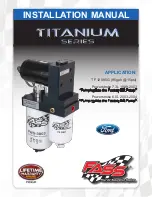
Seat belts
Always fasten the seat belts before you drive or ride
.
A chime will sound several times if the driver has not
fastened his seat belt.
To buckle:
Pull the belt out far enough to insert the latch plate into the receptacle until a distinct click is heard. The seat belt
retractor is normally "unlocked" and you can move freely, provided that the shoulder belt is not pulled out too far. The
retractor will lock up as follows:
· if the belt is pulled out rapidly
· during braking and acceleration
· if the vehicle is leaning excessively
· when driving in turns
For the seat belt to provide maximum protection in the event of an accident, it must be worn correctly. When wearing
the seat belt remember:
· The belt should not be twisted or turned.
· The lap belt must be positioned low on the hips (not pressing against the abdomen).
Make sure that the shoulder belt is rolled up into its retractor and that the shoulder and lap belts are taut.
Before exiting the car, check that the seat belt retracts fully after being unbuckled.
If necessary, guide the belt back into the retractor slot.
NOTE:
Legislation in your state or province may mandate seat belt usage.
Adjusting shoulder belt
Lap portion of the belt should sit low
Child seats:
Please refer to
page 14
for information on securing child seats with the seat belts.
During pregnancy
Pregnant women should always wear seat belts. Remember that the belt should always be
positioned in such a way as to avoid any possible pressure on the abdomen. The lap portion of the belt should be
Summary of Contents for 2002 S80
Page 108: ...Contents Top of Page...







































